27th Military Engagement Team
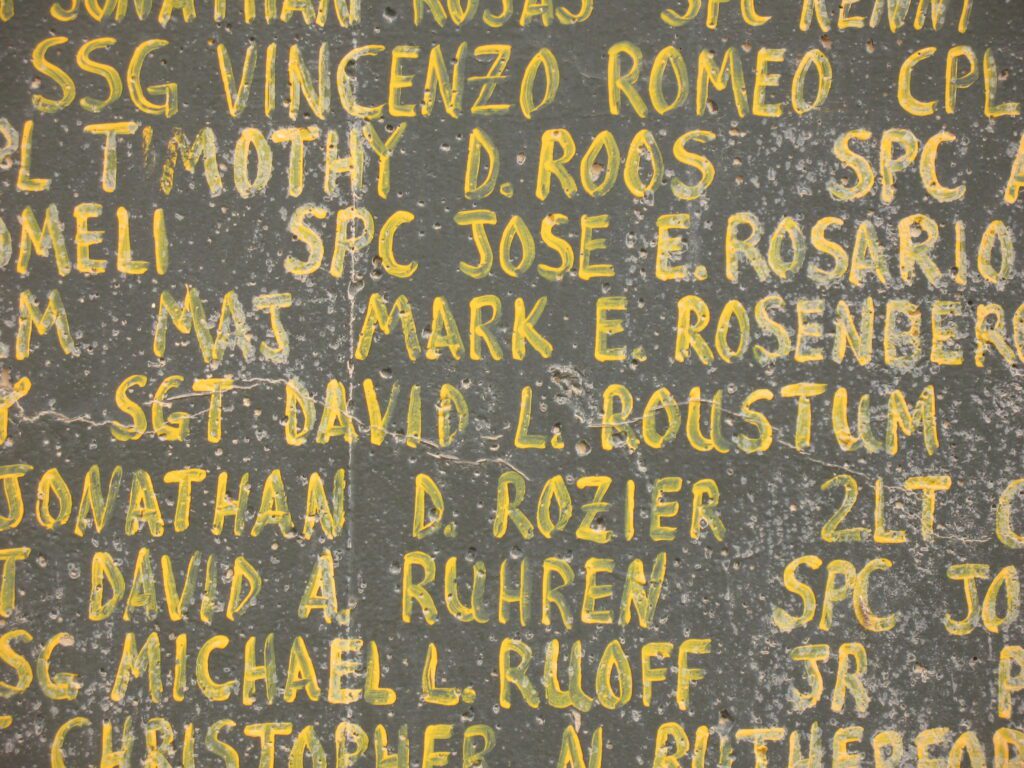
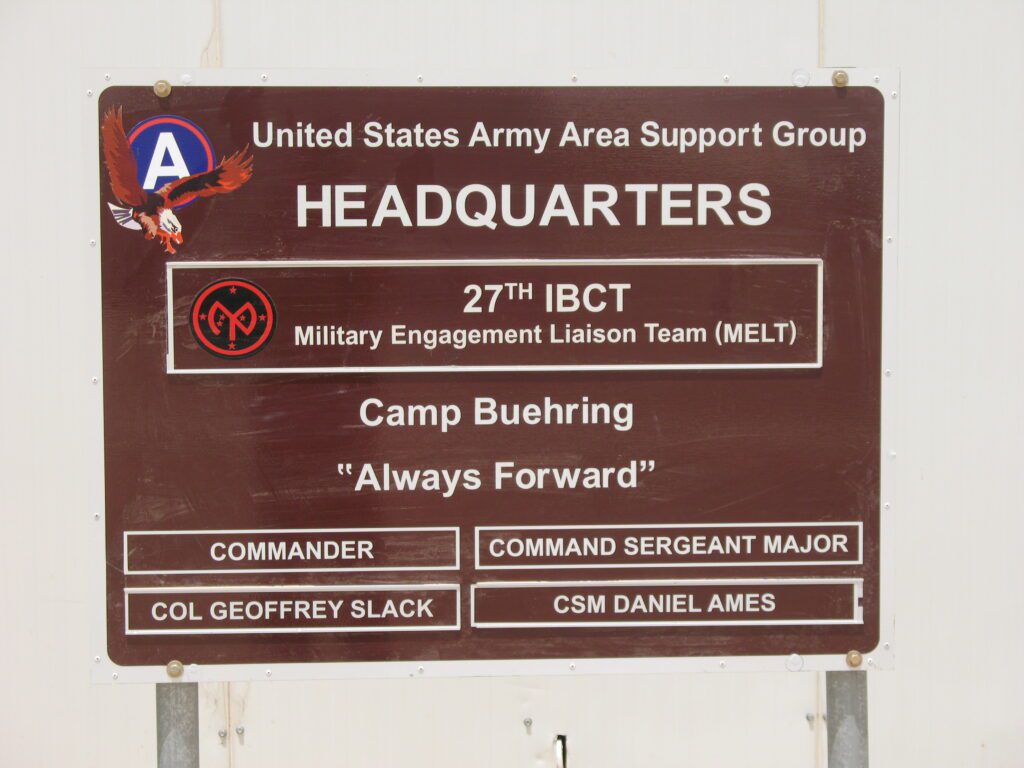
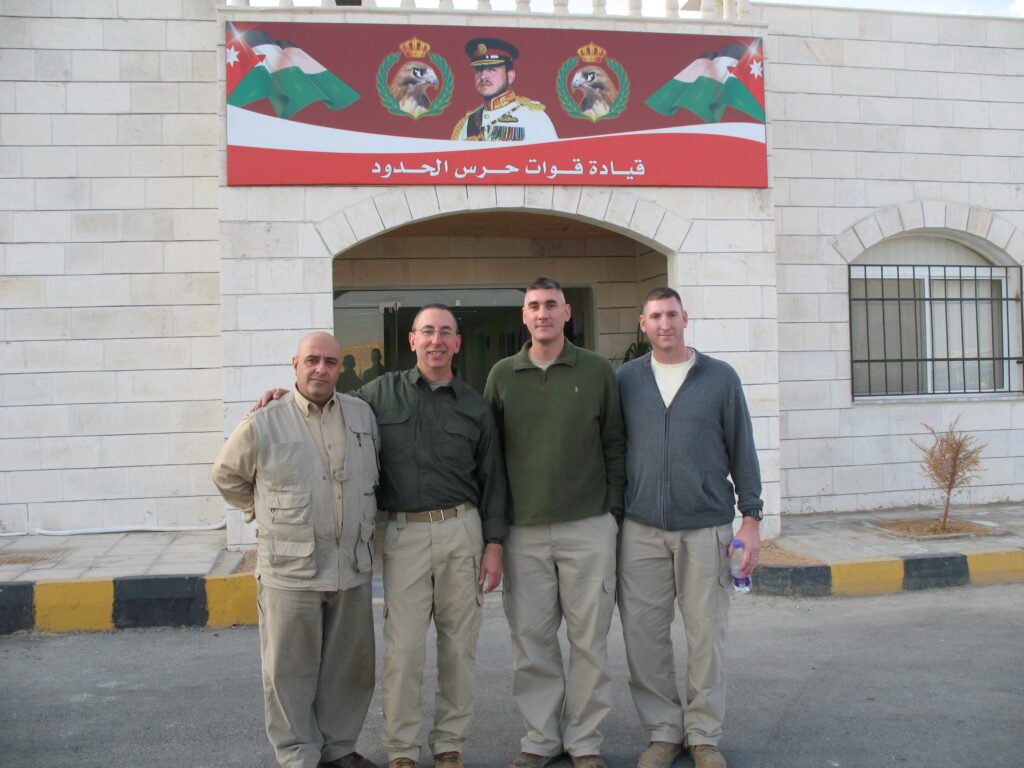
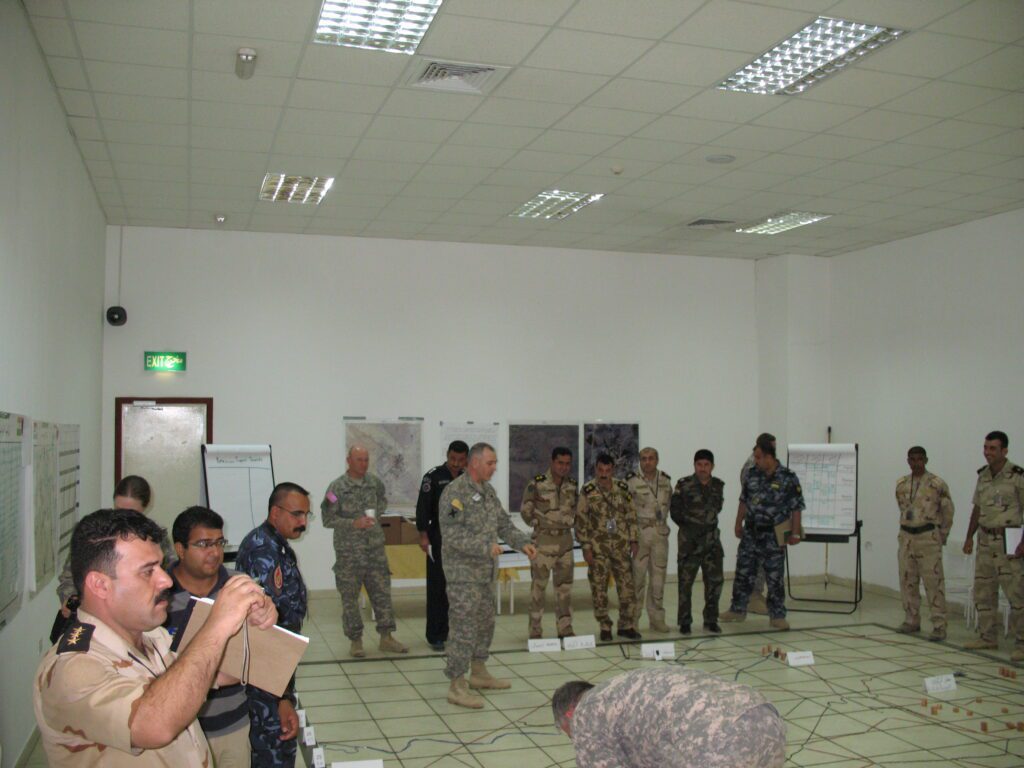
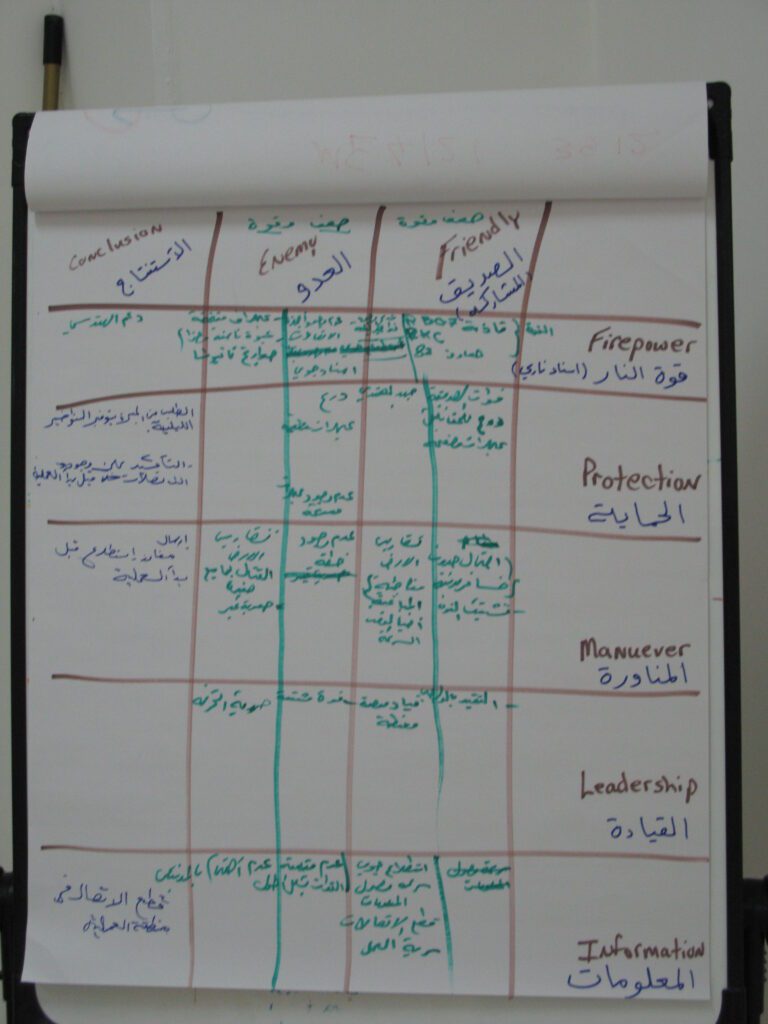
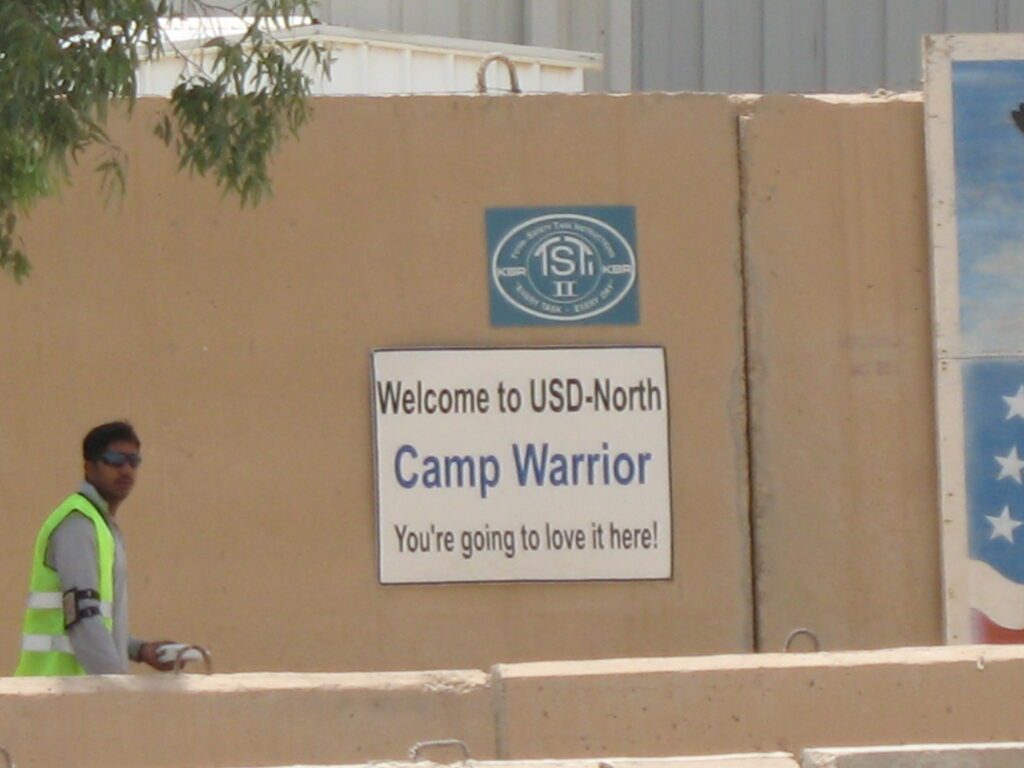
The history of the 27th Military Engagement Team (27th Infantry Brigade Combat Team).
The genesis of the team began with the mobilization of the 27th Infantry Brigade Combat Team in January of 2012. The brigade had been slated to deploy to Afghanistan as part of Operation Enduring Freedom. Late in 2011 the Brigade was notified that it would not be deploying to Afghanistan and that there was a possibility that it would instead go to Kuwait. By December, the decision for a Kuwait deployment was still in doubt but the planning for the mobilization continued. On January 27th, the BCT HQ mobilized at their Home Station armories and moved by bus to Hancock Airfield in Syracuse for the flight via military chartered aircraft to Camp Shelby, Mississippi.
Once at Mobilization Station on Camp Shelby, the Brigade was notified that not all of its personnel were needed for the Kuwait mission. In fact, several units had not even mobilized; the 2-101 Cavalry Squadron, the 1-258 Field Artillery and the 1-69 Infantry Battalions had stayed home to maintain NY State’s homeland defense capability. The Brigade Personnel and Operations sections worked to find positions within Operation Enduring Freedom for all of the Soldiers who had been mobilized. Eventually 23 Force Tracking Numbers were resourced with the men and women of the mobilized Twenty-Seventh. A Military Assistance Team was one of those FTNs that needed to be filled. It called for a small, select team of officers and enlisted Soldiers that would work with friendly foreign militaries in the Arabian Gulf region. The Brigade staff provided most of the positions with a few fills from elsewhere in the Brigade Headquarters Company. The following roster was developed:
- Colonel Geoffrey J. Slack, 27 IBCT CDR, Team OIC
- Colonel Charles T. Crosby, 27 IBCT DCO, Team 2IC
- Lieutenant Colonel Matthew Bjelobrk, 27 IBCT S3, Team XO
- Lieutenant Colonel Todd Bookless, 27 IBCT Aviation Officer, Team S3
- Lieutenant George McHugh, 27 IBCT Staff Judge Advocate
- Major Diane Armbruster, 27 IBCT S6, Team S1*
- Major John Sandefur, 27 IBCT S2, Team S2
- Major Patrick Clare, 27 IBCT S4, Team S4
- Major Michael Bice, 27 IBCT Electronic Warfare Officer*
- Major Nicholas Teta, 27 IBCT AS3 OPS
- Major Chris Guilmette, 27 IBCT Engineering Officer
- Major Eric Rudy, 27 IBCT Automation Officer
- Major Robert Stealey, 27 IBCT Air Defense Officer
- Major Cameron Lenahan, 27 IBCT A&I Officer
- Captain Brian Bonnano, 27 IBCT Fire Support Officer*
- Captain Paul Hujer, 27 IBCT AS2, Team AS2
- Captain Sarah Valois, 27 IBCT AS4, Team AS4
- 1st Lieutenant Matthew Southard, 27 IBCT Medical Operations Officer*
- 2nd Lieutenant Dawn M. Hersey, 27 IBCT Tactical Intel Officer*
- Chief Warrant Officer 2 Thomas Fancher, 27 IBCT Targeting Technician
- CSM Daniel Ames, 27 IBCT Command Sergeant Major, Team NCOIC
- MSG Roy Sayward, 27 IBCT Chaplain’s Assistant*
- MSG John W. Tyler, 27 IBCT Operations NCO
- MSG Paul Bialobok, 27 IBCT Operations assistant
- SFC Michael Barker, 27 IBCT HHC Readiness NCO
- SFC Michael Rutter, 27 IBCT PSD NCO
* Soldiers were promoted during their time in the 27th MET.
Shortly after the final team was assembled, the process of determining what specialized training was needed began. Coordinating with the unit they replaced took place via email, DSN phone, and Secure Video Teleconference. There were three primary focuses for training: FORSCOM directed, 1/1 MAT suggested, and 27 MAT suggested. Weapons training consisted of both M4 rifle (with optics) and the M9 pistol. Academic training consisted of a special week long symposium at the US Army War College in Carlisle, PA.; a week at the Department of State’s Foreign Service Institute in Arlington, VA.; and three days of Leader’s Development in Education for Sustained Peace at Camp Shelby, MS. Additionally, five Soldiers were selected to attend the US Army Corps of Engineer’s International Terrorism Awareness Course (INTAC) in Winchester, Virginia.
Another unusual aspect of the whole mission was that we would do most of our travel utilizing the red official USGOV passport. We began the process of obtaining these by travelling to Keesler AFB in Biloxi, MS. They had a passport office that handled our photos and paperwork. MSG Tyler was our point man on this task and he kept after it like a dog with a bone. We were also instructed to bring suitable civilian clothing for travel and civilian baggage.
By early April the advance party was on its way to Kuwait, with the main body following in mid-April. The team was housed at Camp Buehring, Kuwait close to the Iraq-Kuwait border and Khubari Crossing. The Advance party (ADVON) had drawn rooms, vehicles, office space, and supplies for the whole team. Within one week the team was working hard on conducting their Relief-in-Place (RIP) with the 1/1 MAT of the 1st BCT/1st Cavalry Division from Fort Hood, Texas. Missions for the team began to appear as they finished the RIP and completed the Transfer of Authority (TOA).
The initial mission which we were able to begin almost immediately was to conduct a Relief in Place with the 1st CAV personnel who were partnered with the Kuwait Land Forces. We assigned observer/mentor teams to the following units: Kuwait Land Forces units: 15th Armor BDE, 35th Armor BDE, 26th Mechanized BDE, and 94th Mechanized BDE.
Several of the team was assigned to liaise with the Kuwaiti military and some were sent south to Camp Arifjan to become Liaison officers with the higher headquarters at US Army Central Command’s Office of International Military Affairs.
- MAJ Robert Stealey
- CPT Matthew Southard
The team spent several weeks trying to refine their idea of what the mission for the MAT was in the eyes of their superior, Major General Cheek, Deputy Commanding General of ARCENT (Operations). It became clear that engagement with friendly militaries was becoming very important as a means of solidifying US interests in the region. By mid-May, the team’s AOR had spread to include all of the Central Asian Republics. The long awaited publication of the ARCENT Fragmentary order, establishing the duties and responsibilities of the team, also brought about a name change to the 27th Military Engagement Team or 27th MET. The Team had seen several different versions of the new name and in fact jumped the gun and had a sign for their Headquarters made stating, “27th Military Engagement Liaison Team†or 27th MELT.
Another change brought about by the publication of the FRAGO was the loss of three members to Area Support Group-Kuwait to support the Kuwait Ministry of Defense Joint Operations Center project (KMOD-JOC). MAJ Guilmette had a great deal of familiarity with this type of work from his civilian job and was a huge asset. As COL Crosby has stated, “This is a great example of the National Guard being able to provide expertise the Regular Army simply does not have.”
- LTC George McHugh
- MAJ Chris Guilmette
- SGM Roy Sayward (Promoted at MOB station)
Shortly after arriving in Kuwait, MSG Tyler began to cycle everyone through the process of obtaining a second official passport, utilizing the services of ASG Kuwait to facilitate the process. The first passports were already being submitted to a series of CENTCOM countries for visas. Eventually, we would have two passports, with visas for Iraq, Jordan, Lebanon, Yemen, Kazakhstan, Saudi Arabia, UAE, and Kyrgyzstan. Some countries did not require visas, but handled entry at the aerial port of debarkation.
By early June, the first out of country mission was underway. Eight personnel flew to Kazakhstan to conduct classes on Urban and Convoy Operations with the Kazakh Brigade (KAZBRIG). This unit was established to operate to NATO standards and therefore required special training from several Western countries. It was anticipated that there would be more missions to follow in Kazakhstan. Team members were:
- LTC Matthew Bjelobrk
- LTC Michael Bice (recently promoted)
- MAJ Robert Stealey
- MAJ Cameron Lenahan
- MAJ Brian Bonnano (recently promoted)
- MAJ John Sandefur
- MAJ Patrick Clare
- CSM Daniel Ames
Soon after the return this team, the ADVON for another mission departed Kuwait, heading for Baghdad, Iraq. This mission was specifically requested by LTG Robert Caslen, the Chief of the Office for Security Cooperation-Iraq. He wanted a team to go into Kirkuk and work with the military and police units that made up the enforcement arm of the Combined Security Mechanism for that region. Two five-day sessions of the Military Decision Making Process were designed to accomplish this task. The ADVON worked with OSC-I personnel in order to prepare a realistic scenario to serve as the basis for the MDMP. The location for the training was Contingency Operating Site Warrior, which had been a Forward Operating Base prior to the US drawdown from Iraq in 2011. It now operated under the auspices of the US Department of State and served as the location for the US Consulate in Kirkuk. It also housed the United Nations Mission to Iraq presence in Kirkuk and the Golden Lions Battalion. The Golden Lions were a composite element consisting of Kurdish Peshmerga and Iraqi police and army units. It was their responsibility to secure the city of Kirkuk. Violence in the region had been steadily escalating and LTG Caslen and the US Embassy were concerned. With the arrival of the main body of the team in early July, the training was ready to begin. The two sessions went very well and everyone learned something from the experience. The capstone event for the MET was when LTG Caslen tasked them to brainstorm a series of recommendations to help alleviate the current situation in Kirkuk. Working within the confines of the scenario they were given the Team produced an in-depth series of recommendations based on Mission Command, Sustainment, Intelligence, and Maneuver. Each team member was awarded a Joint Service Achievement Medal as a result of their efforts. The team consisted of:
- LTC Todd Booklessâ—Š
- CPT Paul Hujerâ—Š
- CW2 Thomas Fancherâ—Š
- COL Geoffrey Slack
- COL Charles Crosby
- MAJ Diane Armbruster
- CPT Sarah Valois
- 1LT Dawn Hersey
- MSG John Tyler
- SFC Michael Rutter
â—Š ADVON
Within a week of the return of the Iraq mission, a two person team would soon depart for the United Arab Emirates. They would work under the US Liaison Office-UAE and assist with enlarging the Emirate’s understanding of “over-the-horizon†systems such as artillery and aviation. This was selected as a long term mission and the two members were not expected back before the 27th’s RIP with their replacements in December of 2012.
- LTC Matthew Bjelobrk
- MAJ Brian Bonnano^
^ Returned to CONUS in October briefly to witness the birth of his daughter.
August saw the observation of Ramadan in the region which slowed much of the remaining partnerships with the Kuwaiti forces. Eventually these missions would be turned over completely to the units of the 3rd Armored Brigade Combat Team/3rd ID, of the Task Force 3.1 (Spartan Shield). The team’s previous work in Iraq started to bear fruit as another request came in from OSC-I for a special three person team to handle strategic communications for a sensitive mission.
While this mission was going through the process of getting approval, MG Cheek sent COL Slack and LTC Bookless to Jordan on an “On-the-Ground-Recon†(OGR). The Syrian conflict was causing a severe refugee crisis in Jordan and its neighboring countries. CENTCOM had established a forward command post in anticipation of the situation reaching critical proportions. MG Cheek determined that he didn’t have enough situational awareness of what was going on at the border and within the elements of the Jordanian security forces responding to the situation.
During this time, a second Kazakhstan mission was launched, but on a much smaller scale. This time two Soldiers would go there to teach the fundamental concepts behind becoming an Observer/Controller (or Evaluator) for the KAZBRIG. The team worked not only with the Kazakh’s but NATO forces and Soldiers from the Arizona Army National Guard’s State Partnership Program. This mission would last until early October and would prove very rewarding for both members.
- MAJ John Sandefur
- MSG Paul Bialobok
Yet another Central Asian Republic mission occurred with two personnel flying off to Kyrgyzstan to work with their NATO standard unit, the 1st Separate Infantry Mountain Battalion.
- MAJ Nick Teta
- CW3 Thomas Fancher
This mission lasted from 19-29 September 2012 and they had some interesting experiences trying to get around the mountainous terrain in the country.
September saw MAJ Clare return to Camp Shelby and CONUS to support the re-deployment of portions of the Brigade that had made it to Afghanistan.
Following the return of the OGR, MET-Jordan was formed at Camp Buehring in anticipation of an impending mission. This mission would entail conducting “interviews†or “assessments†of refuges recently crossed into Jordan, along with high to mid-level liaisons with Jordanian Border forces. Additionally, a technology issue would involve the team’s Automation officer. The culminating product of this mission would be a series of weekly reports involving analysis of materials derived from the various sub-missions, so a substantial Military Intelligence presence was added. This eventually involved adding special augmentees from the 513th MI Brigade in CONUS. Another first for the team was the inclusion of linguists from the team’s pool back in Kuwait.
This team consisted of:
- COL Slack
- LTC Bookless
- MAJ Stealey
- MAJ Rudy
- CPT Hujer
- 1LT Hersey
- CW3 Park (513th MI BDE Augmentee)
- CW3 Cruzado (513th MI BDE Augmentee)
- MSG Tyler
- SFC Rutter
- A. Kemel (Contract Linguist)
- K. El Hassani (Contract Linguist)
- S. Koki (Contract Linguist)
- H. Brichi (Contract Linguist)
A lot of rapid learning was involved in determining the exact process of requesting linguist support for this TDY mission. The mission took longer than expected to get a formal approval, due to portions that were deemed politically sensitive and personnel did not move to Jordan until mid-October. Upon arrival in Amman, the team was moved to the King Abdullah II Special Operations Training Centre north of the capital city. That is where the CENTCOM Forward Jordan Combat Operations Information Center had been established in early August. In order to begin operations the team had to conduct meetings with several different elements to include the Military Assistance Program-Jordan (MAP-J), the Jordan Command of Border Guard Forces, and other elements within the US Embassy. Shortly after arrival in Jordan and meeting with the Embassy personnel it was determined that the assessment mission would not happen. Introductions were made during the first week on the ground with the leadership and staff of the Jordanian Border Guard Forces Command (JBGFC).
1. Amid Hussein, CDR BGF
2. Akid Fayez, CHOPS
3. Akid Firas, G2
4. Akid Ali, G1
5. Muqaddam Abdul Kareem, LNO to MET
6. Muqaddam Hassan, G6
At the end of this first week the three other missions were instituted. Colonel Slack led the Liaison mission to explore the capabilities and front-line trace of the BGF; Major Stealey led a small team that worked at the Border Guard Security (Command) Operations Center (BSOC); and Major Rudy worked with Muqaddam Hassan to determine what it would take to push the ICE camera feed to the CF-J COIC.
In the middle of the second week, a briefing was given to BG Amid Hussein and his staff to help them understand what the MET was seeing and how they might be able to help the BGF. Amid Hussein was very enthusiastic about the Digital Common Operational Picture (DCOP) tool developed by Captain Hujer using Google Earth. He declared that he would assign several BGF personnel to Captain Hujer in order to expedite a complete product that would assist in situational awareness for the whole of the BGF.
At the end of the second week a meeting was held with MG Cheek to inform him of the team’s progress. During this meeting the DCOP was briefed to MG Cheek and he was also very enthusiastic about its possibilities. Lastly, MG Cheek expressed that he no longer had any interest in having the ICE feed at the CF-J COIC.
The LNO missions began to generate a substantial quantity of data (geo-coordinates, photos, and place names) that was used to populate the DCOP. Storyboards were drafted for each Leader Engagement that took place and written summaries were submitted to the CF-J and MAP-J staff. The HUMINT warrants that had been brought to support the assessment mission were instead sent out with the LNO team to draft reports based on the engagements. First Lieutenant Hersey became a liaison to the CF-J G2 and handled the operations updates at KASOTC.
Once we had sufficient data on the border guard force locations and vignettes from the local commanders, we put everything together. COL Slack chaired the working group and discussed what he would like in terms of video, still photographs, and items displayed on the DCOP. Our initial presentation was very small with just our staff and the CDR of the Border Guards and some of his staff. When we were done, he stated that the G3 of the Jordanian Army must see this. When we communicated that back to MG Cheek, he then reached out to LTG Brooks, who made a visit to be there as well. So, we had about eight general officers in the room as we walked them through the border setup and what we were seeing in relation to the refugee flows. That was a little overwhelming, but it continued to grow during the rest of our time there.
MAP-J decided that the US Ambassador and his team needed to see this, so off we went to the Embassy in Amman. Within minutes of finishing that brief, the Ambassador decided to call in the UN High Commissioner for Refugees liaison and have him get the brief. By this time, I think I could have done this in my sleep…
This was all taking place around late November and our relief from the 55th IBCT were due to start arriving soon. This necessitated a shift in our focus as we all started working on drafting continuity books for our counterparts. Once they had arrived in early December, we paired off and walked them through our jobs and how to travel, who to talk to, etc.
Late December 2012, saw us heading back to Kuwait to pack our equipment and close out any loose ends. The MET did a full handoff in Kuwait with the 55th MET and headed back to Camp Shelby for DEMOB.
But the Jordanian mission had a few more surprises for us. The Pentagon reached out to COL Slack and let him know he needed to bring his briefing team up to DC to brief there, then travel to CENTCOM to brief them. That was a whirlwind five days! Once back to Shelby, most of the MET had headed home and same for the 27th personnel who had been deployed elsewhere in CENTCOM. Some of us took a four-day pass while waiting for the civilian employees to come back off of Christmas holiday. COL Slack ended up returning to DC to brief at National Guard Bureau and then it was all over.
What had started out looking like a lackluster deployment turned into one of my most memorable life events. Stressful, fast paced, chaotic…yes. But boy did I learn a lot.
In writing this synopsis, I have requested help from several of the MET members, but they are busier in life than I am. I expect I may have misremembered some of these events, so this story may change in the future.
MAJ (Ret.) Paul Hujer